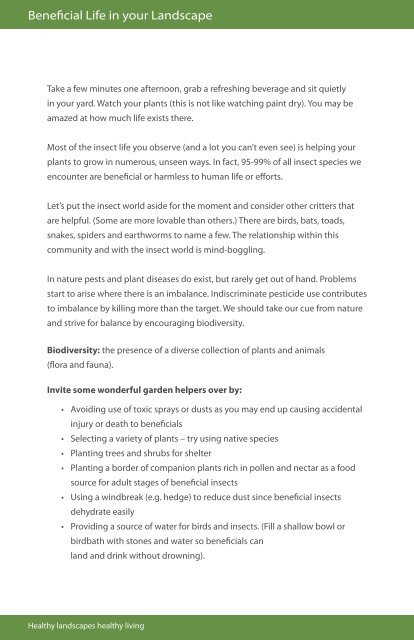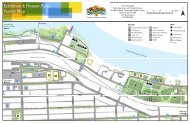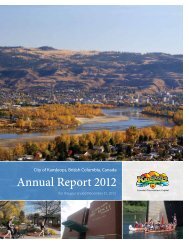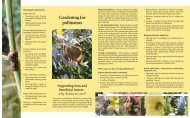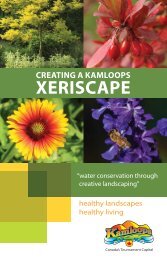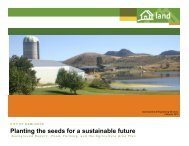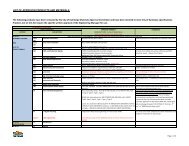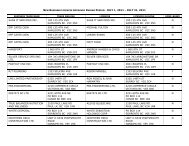PLANT HEALTH CARE - City of Kamloops
PLANT HEALTH CARE - City of Kamloops
PLANT HEALTH CARE - City of Kamloops
You also want an ePaper? Increase the reach of your titles
YUMPU automatically turns print PDFs into web optimized ePapers that Google loves.
Beneficial Life in your Landscape<br />
Take a few minutes one afternoon, grab a refreshing beverage and sit quietly<br />
in your yard. Watch your plants (this is not like watching paint dry). You may be<br />
amazed at how much life exists there.<br />
Most <strong>of</strong> the insect life you observe (and a lot you can’t even see) is helping your<br />
plants to grow in numerous, unseen ways. In fact, 95-99% <strong>of</strong> all insect species we<br />
encounter are beneficial or harmless to human life or efforts.<br />
Let’s put the insect world aside for the moment and consider other critters that<br />
are helpful. (Some are more lovable than others.) There are birds, bats, toads,<br />
snakes, spiders and earthworms to name a few. The relationship within this<br />
community and with the insect world is mind-boggling.<br />
In nature pests and plant diseases do exist, but rarely get out <strong>of</strong> hand. Problems<br />
start to arise where there is an imbalance. Indiscriminate pesticide use contributes<br />
to imbalance by killing more than the target. We should take our cue from nature<br />
and strive for balance by encouraging biodiversity.<br />
Biodiversity: the presence <strong>of</strong> a diverse collection <strong>of</strong> plants and animals<br />
(flora and fauna).<br />
Invite some wonderful garden helpers over by:<br />
• Avoiding use <strong>of</strong> toxic sprays or dusts as you may end up causing accidental<br />
injury or death to beneficials<br />
• Selecting a variety <strong>of</strong> plants – try using native species<br />
• Planting trees and shrubs for shelter<br />
• Planting a border <strong>of</strong> companion plants rich in pollen and nectar as a food<br />
source for adult stages <strong>of</strong> beneficial insects<br />
• Using a windbreak (e.g. hedge) to reduce dust since beneficial insects<br />
dehydrate easily<br />
• Providing a source <strong>of</strong> water for birds and insects. (Fill a shallow bowl or<br />
birdbath with stones and water so beneficials can<br />
land and drink without drowning).<br />
Healthy landscapes healthy living


